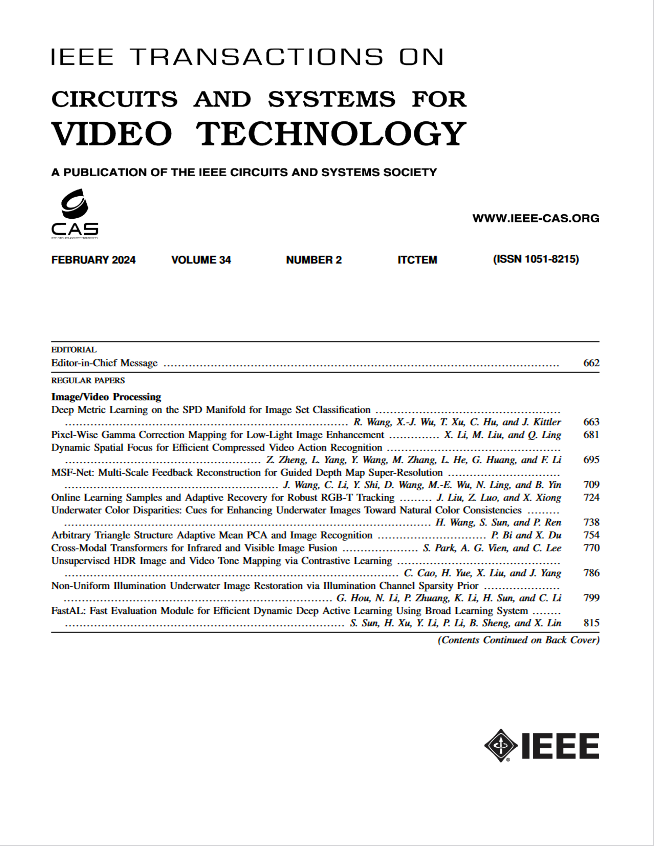走向零样本学习:一个简要回顾和基于关注的嵌入式网络
IF 8.3
1区 工程技术
Q1 ENGINEERING, ELECTRICAL & ELECTRONIC
IEEE Transactions on Circuits and Systems for Video Technology
Pub Date : 2022-09-20
DOI:10.1109/TCSVT.2022.3208071
引用次数: 5
摘要
零样本学习(ZSL)是近年来出现的一个新课题,其目标是通过从可见类中获取图像来区分看不见的类图像,以训练分类器。现有的作品往往在全局特征空间和属性空间之间构建嵌入,而忽略了图像部分的宝藏。辨别信息通常包含在图像部分,例如斑马的黑白条纹区域是与马的关键区别。因此,图像部分可以促进可见和不可见类别之间的知识传递。在本文中,我们首先对ZSL进行了简要的回顾,并对这些方法进行了详细的描述。接下来,为了发现有意义的部分,我们为ZSL提出了一个端到端的基于注意力的嵌入网络,该网络包含两个子流:注意力部分嵌入(APE)流和注意力二阶嵌入(ASE)流。APE用于基于注意力来发现多个图像部分。引入ASE是为了通过二阶协作确保知识的稳定转移。此外,提出了一种自适应阈值策略来抑制噪声和冗余部件。最后,为了充分利用全球信息,设立了一个全球分支机构。在四个基准测试上的实验表明,我们的模型在ZSL和GZSL设置下都取得了优异的结果。本文章由计算机程序翻译,如有差异,请以英文原文为准。
Towards Zero-Shot Learning: A Brief Review and an Attention-Based Embedding Network
Zero-shot learning (ZSL), an emerging topic in recent years, targets at distinguishing unseen class images by taking images from seen classes for training the classifier. Existing works often build embeddings between global feature space and attribute space, which, however, neglect the treasure in image parts. Discrimination information is usually contained in the image parts, e.g., black and white striped area of a zebra is the key difference from a horse. As such, image parts can facilitate the transfer of knowledge among the seen and unseen categories. In this paper, we first conduct a brief review on ZSL with detailed descriptions of these methods. Next, to discover meaningful parts, we propose an end-to-end attention-based embedding network for ZSL, which contains two sub-streams: the attention part embedding (APE) stream, and the attention second-order embedding (ASE) stream. APE is used to discover multiple image parts based on attention. ASE is introduced for ensuring knowledge transfer stably by second-order collaboration. Furthermore, an adaptive thresholding strategy is proposed to suppress noise and redundant parts. Finally, a global branch is incorporated for the full use of global information. Experiments on four benchmarks demonstrate that our models achieve superior results under both ZSL and GZSL settings.
求助全文
通过发布文献求助,成功后即可免费获取论文全文。
去求助
来源期刊
CiteScore
13.80
自引率
27.40%
发文量
660
审稿时长
5 months
期刊介绍:
The IEEE Transactions on Circuits and Systems for Video Technology (TCSVT) is dedicated to covering all aspects of video technologies from a circuits and systems perspective. We encourage submissions of general, theoretical, and application-oriented papers related to image and video acquisition, representation, presentation, and display. Additionally, we welcome contributions in areas such as processing, filtering, and transforms; analysis and synthesis; learning and understanding; compression, transmission, communication, and networking; as well as storage, retrieval, indexing, and search. Furthermore, papers focusing on hardware and software design and implementation are highly valued. Join us in advancing the field of video technology through innovative research and insights.

 求助内容:
求助内容: 应助结果提醒方式:
应助结果提醒方式:


